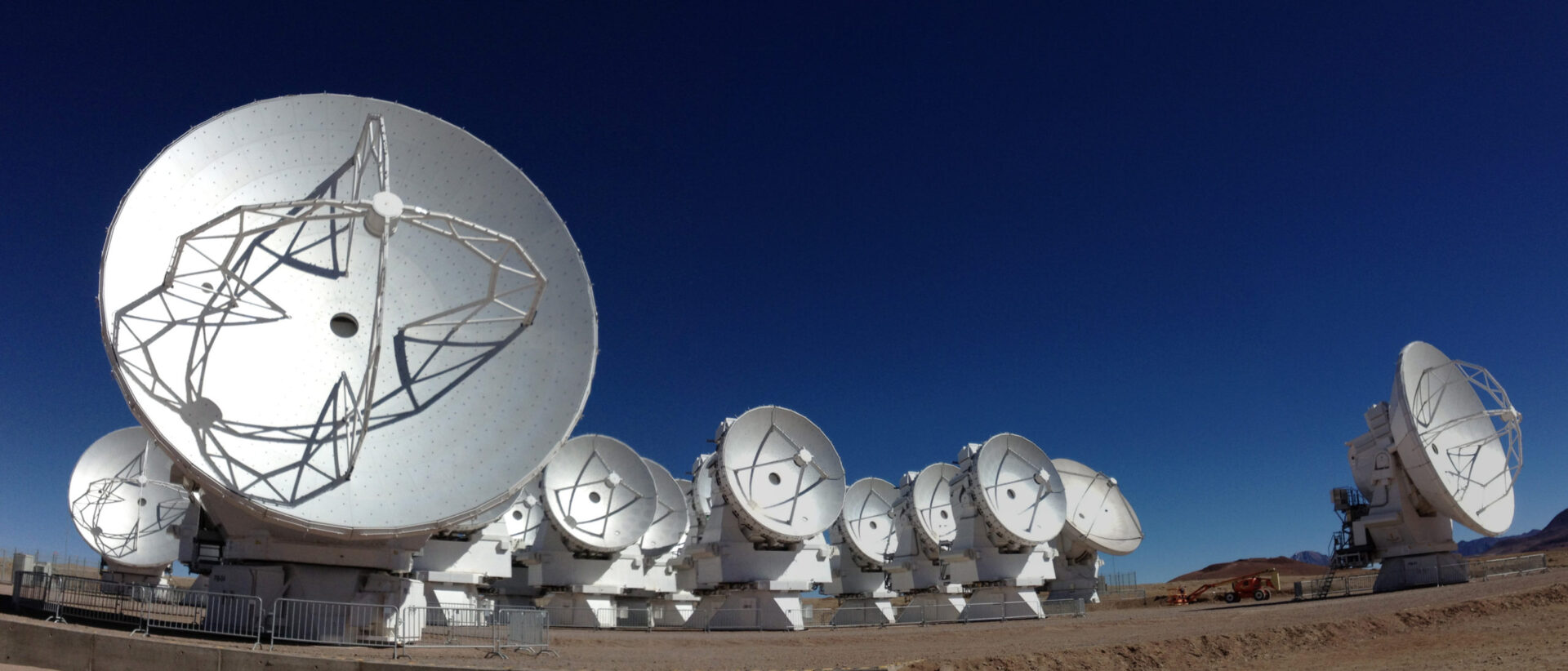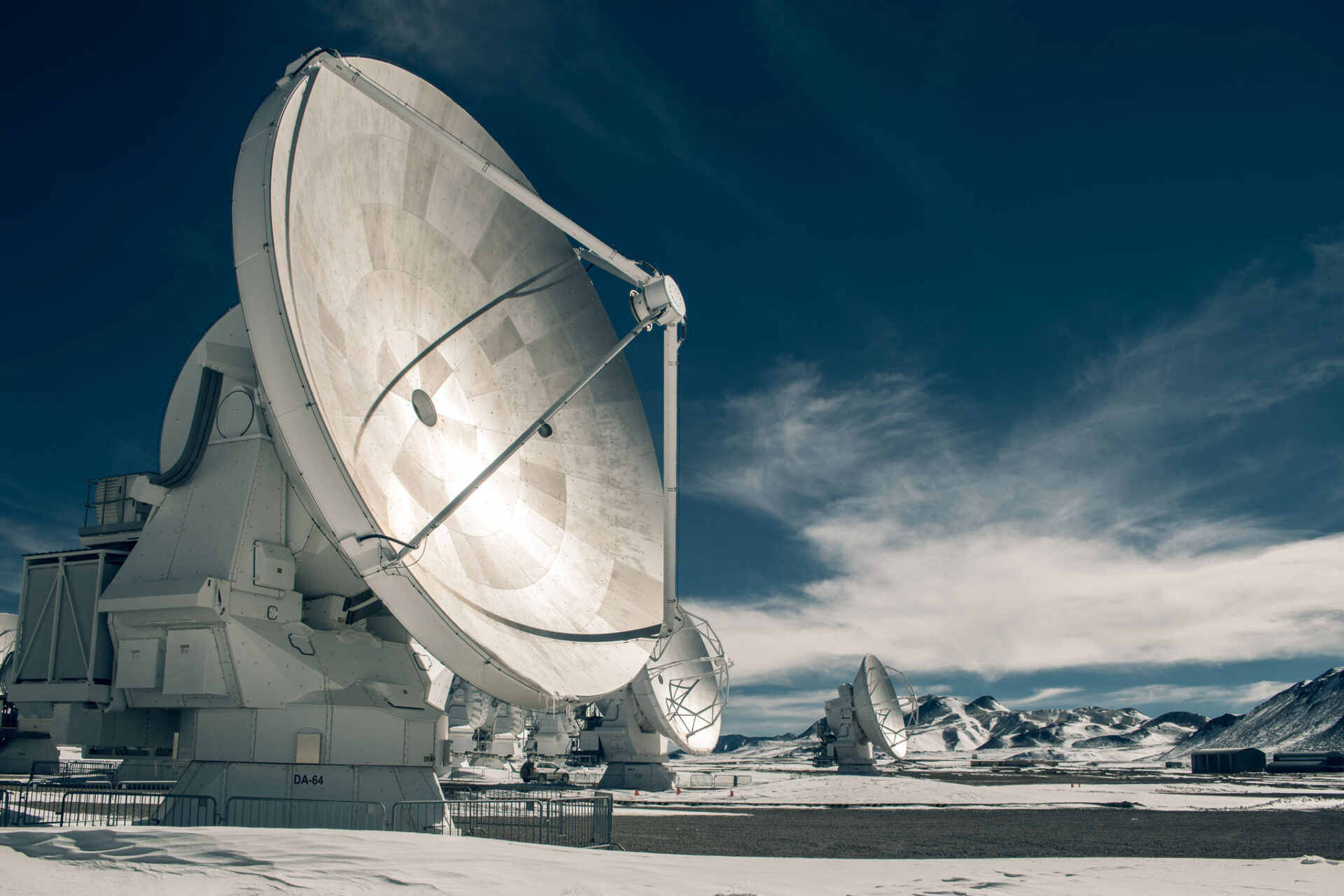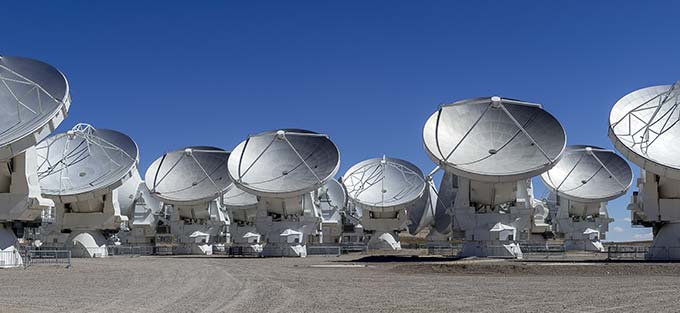High Demand for ALMA Time
The preliminary statistics for the Cycle 7 Call for Proposals show continued high demand for observing time with the Atacama Large Millimeter/submillimeter Array (ALMA). The 1,785 proposals received from all over the world will be ranked by scientists meeting in Atlanta, USA, to determine which will be added to the observing queue for the next cycle, that will run from October 2019 to September 2020.
ALMA Cycle 7 will offer 4,300 hours of observing time on the 12-meters array, which is an increase of 300 hours relative to the previous one. However, the received proposals are requesting more than 19,000 hours of observation in the 12-m array, which is a subscription rate 4.5 times larger than the amount of time available. The region with the highest subscription rate is once more Europe (5.8), while Chile remains the one with the lowest (2.5).
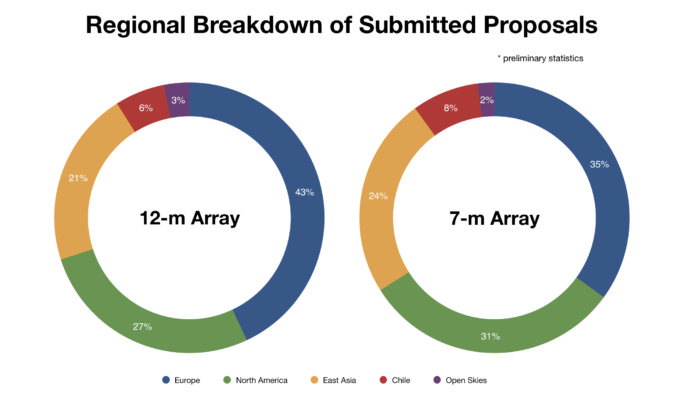
“ALMA is offering a record amount of time to the community in Cycle 7 as we continue to increase the efficiency of operations,” explains Observatory Scientist, John Carpenter. “This will allow more astronomers the opportunity to obtain ALMA data.”
The amount of time requested by a typical proposal continues to increase, from 8.7 last year to almost 9 hours now. The science category with the largest proposals (excluding Large Programs) is Cosmology and High Redshift Universe, where the median proposal requests 12 hours of time on the 12-m array. On the other side, the science category with the shortest proposals is Stellar Evolution and the Sun, with a median of 6.5 hours.
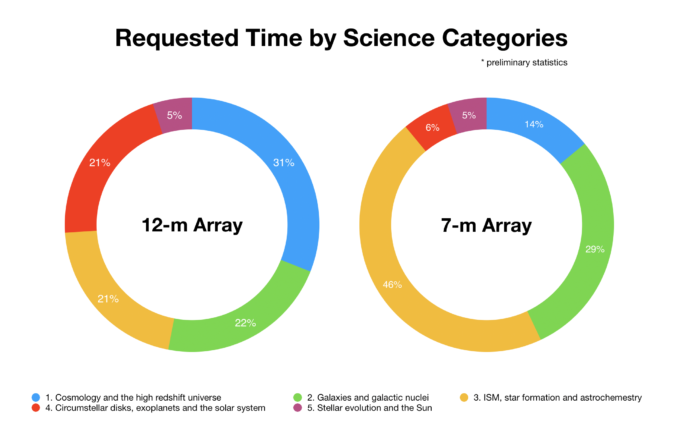
Fourteen Large Programs were received, and twenty proposals requested to use VLBI, which is the same technique used to capture the first image of a black hole. 40% of the time requested by Large Program proposals are from the Cosmology & High Redshift Universe category, while Interstellar Medium, Star Formation, and Astrochemistry category account for 25% of the Large Program proposals. The rest of the non-standard observing modes: ACA standalone, Polarization, Solar, and Target of Opportunity; received 82, 123, 21, and 28 proposals respectively.
The proposals will be evaluated and ranked by 158 astronomers from all over the world, gathered in Atlanta, USA, from Monday, June 17, to Friday, June 21, 2019. The results of this evaluation and the definitive statistics of the Call for Proposals will be announced in August.
“ALMA is extremely grateful to the astronomers who are volunteering their time to review the proposals,” says Violette Impellizzeri, leader of the Proposal Handling Team. “The reviewers play an essential role in selecting the best science programs for ALMA.”
Additional Information
ALMA is a partnership of ESO (representing its member states), NSF (U.S.) and NINS (Japan), along with NRC (Canada), NSC and ASIAA (Taiwan), and KASI (Republic of South Korea), in cooperation with the Republic of Chile. The Joint ALMA Observatory is operated by ESO, AUI/NRAO and NAOJ.
Contacts
-
Nicolás Lira
Education and Public Outreach OfficerJoint ALMA Observatory, Santiago - ChilePhone: +56 2 2467 6519Cel: +56 9 9445 7726Email: [email protected]
